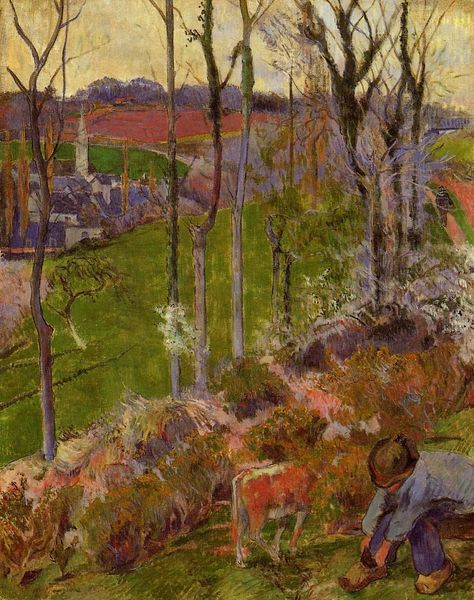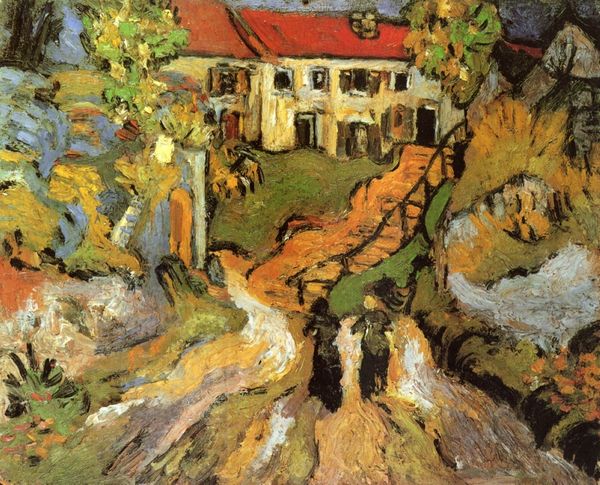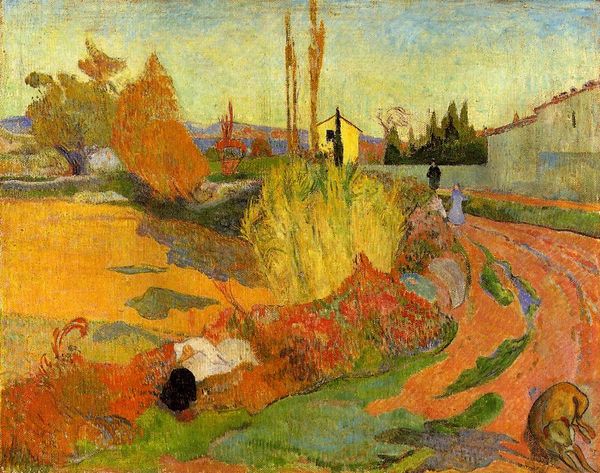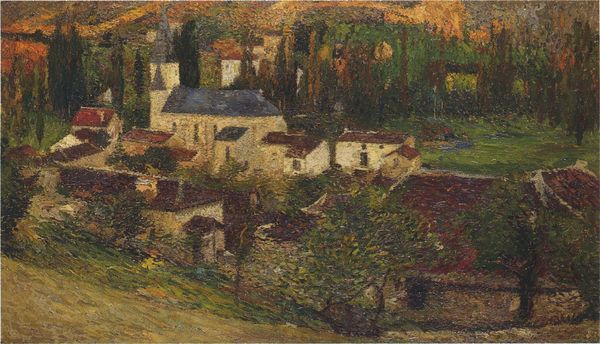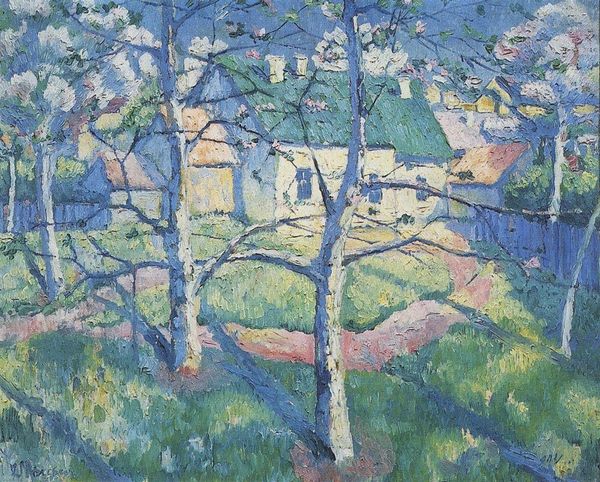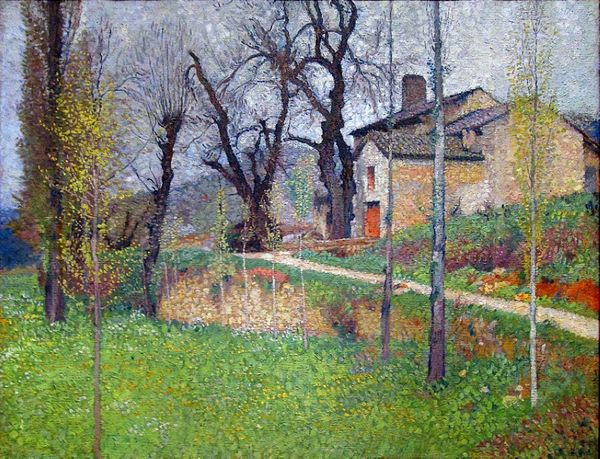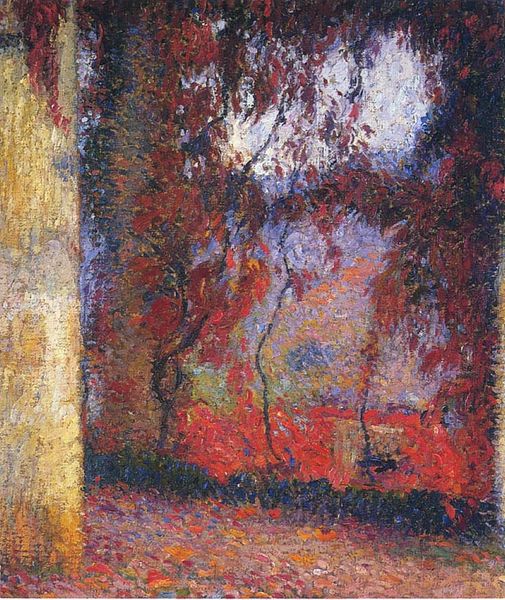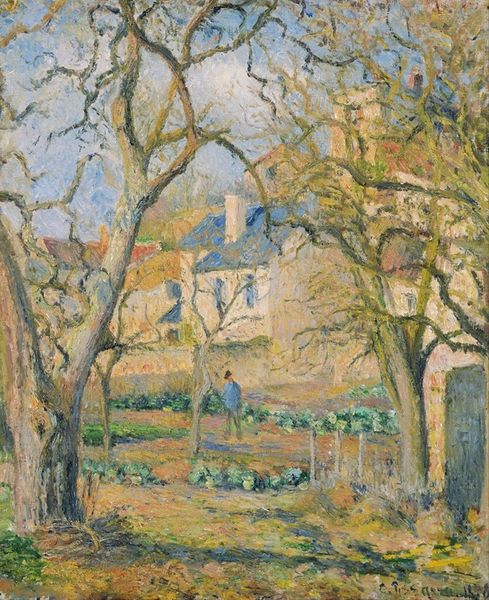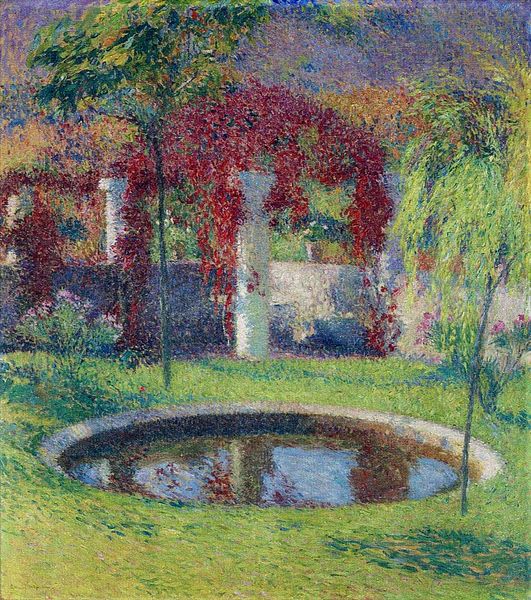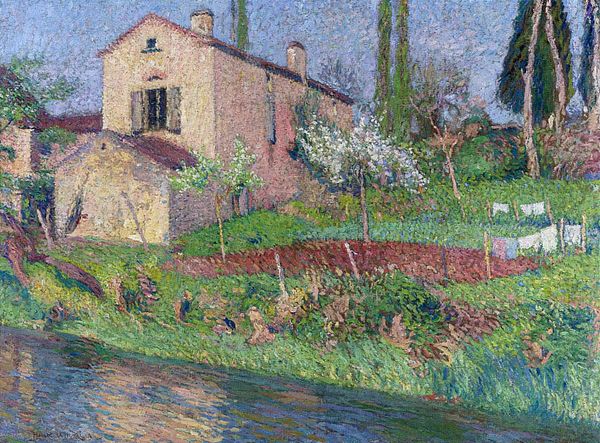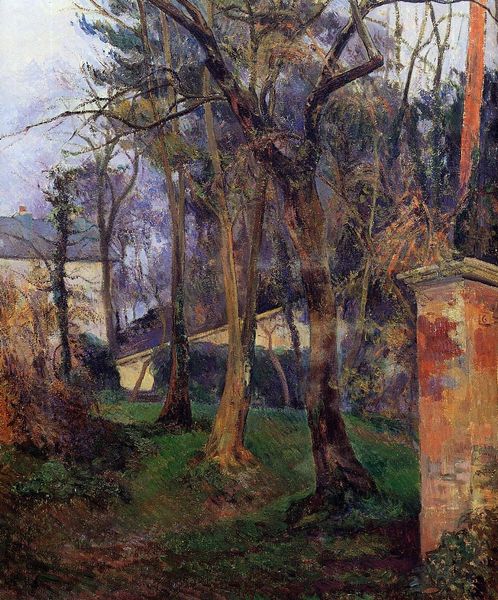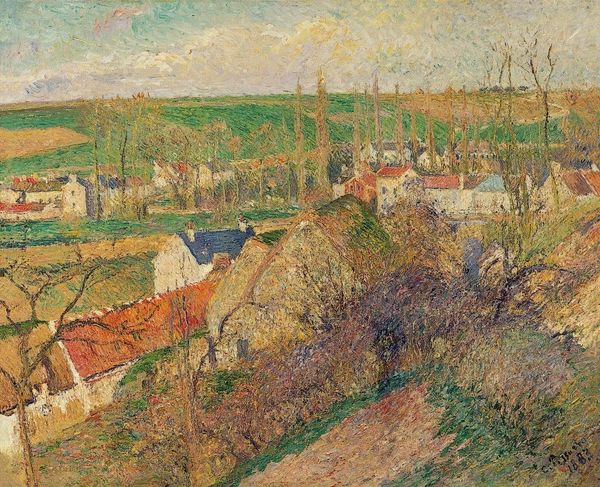
painting, plein-air, oil-paint, impasto
#
painting
#
plein-air
#
oil-paint
#
landscape
#
impressionist landscape
#
impasto
#
post-impressionism
Copyright: Public domain
Paul Gauguin created this landscape painting, Mas, near Arles, using oil on canvas. It's part of a series of works made during his brief stay in the south of France, a period marked by his tumultuous relationship with Vincent van Gogh. Painted in 1888, this work reflects Gauguin's search for a simpler, more authentic mode of life and art, away from the industrialized urban centers. The choice of subject matter, a humble farmhouse or 'mas,' speaks to this desire. We see this pursuit mirrored in his brushwork, which is less concerned with naturalistic representation and more with expressing a subjective emotional response to the landscape. This pursuit of authenticity also led Gauguin to reject the established art institutions and eventually move to Tahiti. To fully appreciate Gauguin's motivations, one must look at the cultural and artistic climate of late 19th-century France, the rise of anti-establishment views and the desire for a more primitive and authentic way of life. By consulting period writings, biographies, and exhibition reviews, we can better understand the social and institutional context that shaped Gauguin's art.
Comments
No comments
Be the first to comment and join the conversation on the ultimate creative platform.
